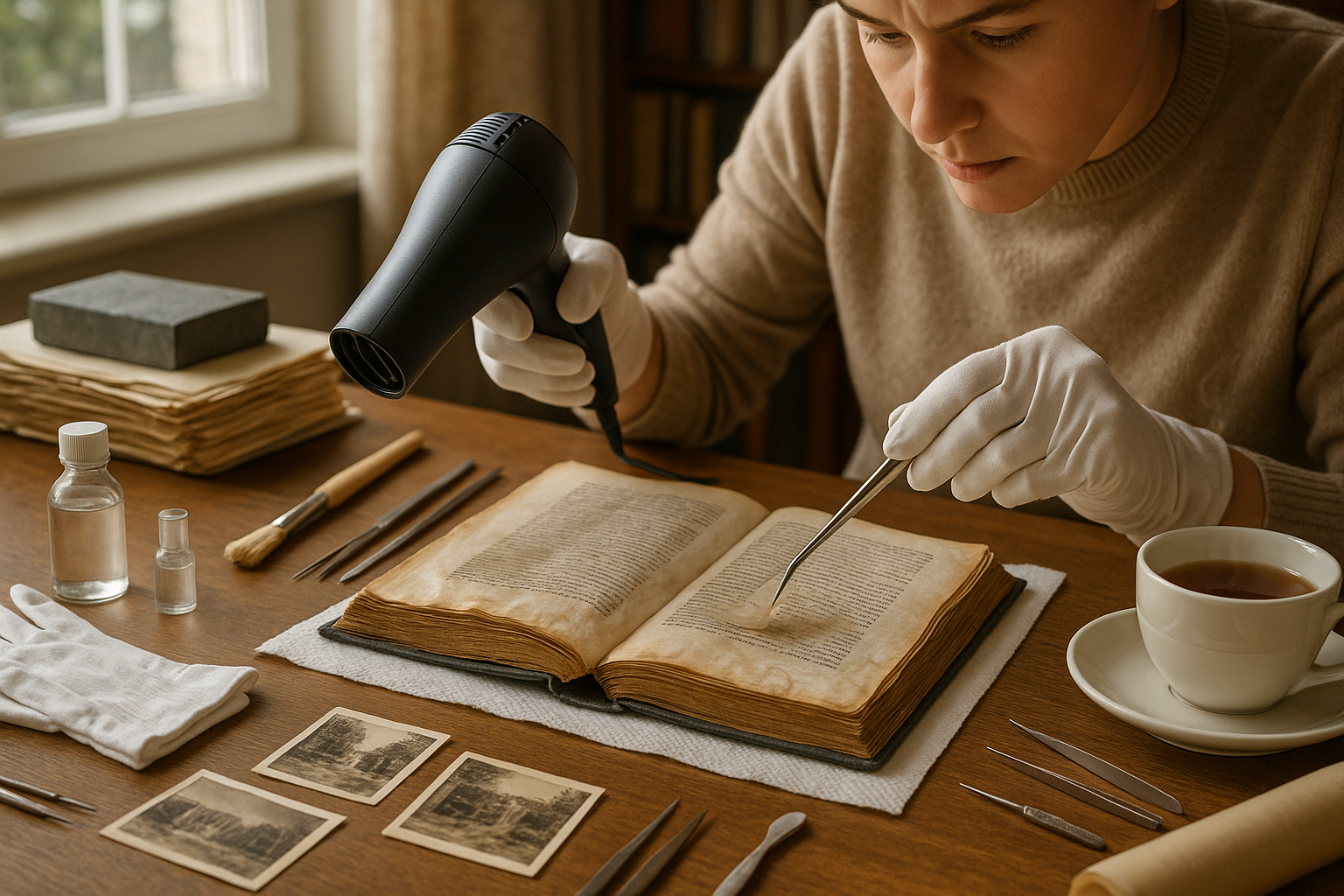Imagine this: a sudden downpour, a leaky roof, or an unfortunate spill, and suddenly your cherished books and vital documents are drenched. 😱 Panic sets in as you watch the ink blur and the pages warp, each one a fragment of memory or critical information seemingly lost to the elements. But before you resign yourself to the loss, take heart. Water damage, though daunting, doesn’t have to mean the end for your beloved pages.
In this comprehensive guide, we’re diving into the world of water-damaged pages and uncovering expert strategies for restoration. Whether it’s a treasured family photo album, vital legal documents, or that beloved novel with the creased spine, we’ll arm you with the knowledge to breathe life back into your waterlogged items. From understanding the science of paper and ink to practical, step-by-step techniques, this article is your beacon in a sea of soggy pages.
Water damage doesn’t discriminate. 📚📜 Whether it’s the result of a natural disaster, a plumbing mishap, or an unexpected accident, the effects are universally frustrating. However, with the right approach, even the most water-weary documents can be revived. The key lies in understanding the materials you’re working with and applying the correct methods to each specific situation. Our goal is to equip you with the tools and confidence to tackle any damp challenge that comes your way.
The Science of Water Damage
Before we delve into the practicalities, it’s crucial to understand what happens when paper meets water. When paper absorbs water, the fibers swell, and the structure weakens, leading to the warping and distortion you often see. Similarly, ink can bleed and fade, while adhesive bindings may loosen or dissolve. This knowledge is foundational as it informs every step of the restoration process.
Preparing for Restoration
Preparation is paramount. The first hours after water exposure are critical, and knowing what to do (and what not to do) can make all the difference. We’ll guide you through initial assessment steps, including how to categorize your items by damage level, and how to prioritize them for restoration. You’ll also learn what materials and tools you’ll need on hand to act swiftly and effectively.
Step-by-Step Restoration Techniques
Once you’re prepared, it’s time to get hands-on. Our detailed, step-by-step techniques will walk you through the process of drying, flattening, and, if necessary, reassembling your pages. Whether you’re dealing with a single document or an entire library, these strategies are designed to maximize your chances of success. We’ll explore methods from air drying to using desiccants and even digital solutions for irreparably damaged items.
Preserving Memories: Beyond the Pages
Sometimes, the real value of a document or book isn’t just in the words or images it contains, but in the memories it represents. We’ll discuss ways to preserve and digitize these memories, ensuring that even if the physical form can’t be fully restored, the essence and information are safeguarded for future generations. 📷💾
Throughout this article, we’ll also highlight expert tips and common pitfalls, giving you a holistic understanding of document restoration. By the end, you’ll not only have the confidence to tackle your current project but also the knowledge to prevent future damage.
Stay with us as we transform water damage from a daunting disaster into a manageable challenge. Let’s revive those pages and reclaim your memories! 🌟

Conclusion: Breathing New Life into Water-Damaged Pages
As we’ve journeyed through the intricate process of restoring water-damaged books, documents, and cherished memories, it becomes clear that while the task may seem daunting, it is indeed achievable with the right knowledge and resources. 📚💧 Whether you’re dealing with a precious family heirloom or essential documents, understanding the proper techniques and having the right tools at your disposal can make all the difference.
Key Takeaways
Throughout this guide, we’ve explored several critical aspects:
- Assessment: Evaluating the extent of water damage to determine the best restoration approach is crucial. Knowing when a professional is needed can save both time and irreplaceable content.
- Drying Techniques: From air drying to using desiccants, choosing the right method depends on the materials and severity of the damage. These techniques help prevent further deterioration and mold growth.
- Cleaning and Flattening: Gentle cleaning methods and careful flattening techniques ensure that restored items remain in the best possible condition without causing additional harm.
- Digital Backup: Emphasizing the importance of creating digital copies of important documents and cherished memories ensures they are preserved against future accidents.
The Importance of Preservation
Preserving water-damaged items is not just about salvaging physical objects; it’s about reclaiming a part of our history and identity. Every book, document, and photograph tells a story. By restoring them, we honor those stories and the memories they hold. The knowledge and techniques shared in this guide empower you to take control of preserving your personal and cultural heritage.
Engage and Apply
We encourage you to share this knowledge with friends and family who might benefit from these insights. Whether you choose to share this article on social media or apply these techniques in your own life, you are contributing to a broader effort of preservation. 🌟
Have you tried restoring water-damaged items? What challenges did you face, and how did you overcome them? Share your experiences in the comments below, and let’s learn together! 💬
For further reading and resources, you might find these links helpful:
Thank you for joining us on this journey of restoration and preservation. Remember, every page saved is a story regained. 🕰️✨




